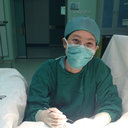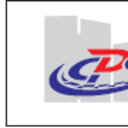Monoclonal gammopathy in rheumatic diseases.
Ключові слова
Анотація
To analyze the clinical spectrum, laboratory characteristics, and outcomes of monoclonal gammopathy (MG) in patients with rheumatic diseases. Screening for the presence of MG was performed in 872 inpatients with rheumatic diseases from January 2010 to July 2017. A total of 41 patients were enrolled. Their clinical and biological features in addition to outcomes were described. For each patient with primary Sjögren syndrome (pSS), 2 age- and sex-matched pSS patients without MG were selected as controls. Risk factors for the presence of MG and malignant hematological neoplasias were assessed. MG was observed in patients with SS, rheumatoid arthritis, systemic lupus erythematosus, ankylosing spondylitis, primary biliary cirrhosis, polymyositis, hypomyopathic dermatomyositis, psoriatic arthritis, ANCA-associated vasculitis, polyarteritis nodosa, and polymyalgia rheumatic, with SS the most frequent type. Serum M protein was detected in 37 patients. The monoclonal bands identified in serum were 16 IgG (5 κ, 11 λ), 11 IgA (6 κ, 5 λ), 6 IgM (5 κ, 1 λ), and 4 free λ chains. M components were observed in urine in the other 4 patients. High ESR, albumin/globulin inversion, rheumatoid factor positivity, hypergammaglobulinemia, and hypocomplementemia were common features, presented in more than half of the 41 patients. Patients with pSS, when complicated with MG, showed a higher rate of abnormal urine NAG (71.4 vs 15.8%, P = 0.025), higher levels of ESR [55.0 (53.5) mm/h vs 21.0 (31.8) mm/h, P = 0.001], ESSDAI [26.0 (25.0) vs 12.0 (9.0), P = 0.006], and ClinESSDAI scores [24.0 (25.0) vs 10.5 (10.0), P = 0.011]. Multivariate analysis revealed that the disease activity, assessed by either ESSDAI [adjusted OR 1.127 (95%CI 1.015-1.251), P = 0.025] or ClinESSDAI [adjusted OR 1.121 (95%CI 1.011-1.242), P = 0.030], was the only independent risk factor for the presence of MG. During the follow-up, 2 patients had transient serum M protein, 2 had isotype switch, 1 progressed to multiple myeloma (MM), and another 2 experienced renal injuries attributed by monoclonal or polyclonal plasma cell interstitial infiltration. Seven (17.1%) of the 41 MG patients presented hematological neoplasias, 4 with MM, 2 with smoldering multiple myeloma, and 1 with B cell lymphoma of mucosa-associated lymphoid tissue (MALT) type. The presence of light-chain MG was associated with the development of MM [OR 17.5 (95%CI 1.551-197.435), P = 0.041], but not with an increased risk of lymphoma or SMM. MG was observed in patients with various rheumatic disorders, with SS being the most common type. The presence of MG might be associated with higher disease activity. The development of hematological neoplasias including MM and lymphoma was seen in this setting. Therefore, we recommend the screening for MG and close monitoring for potential malignant transformation in patients with rheumatic diseases as needed.






